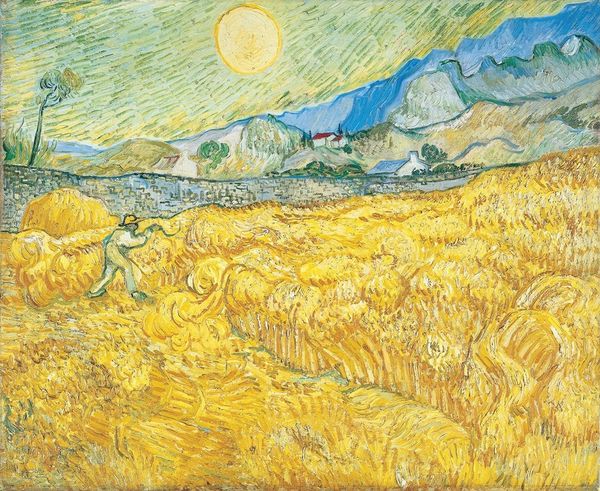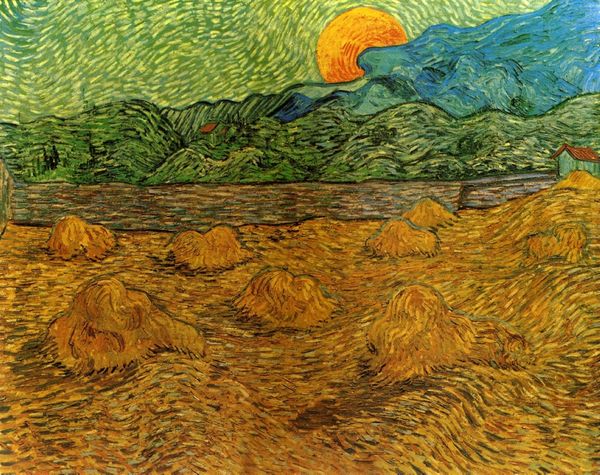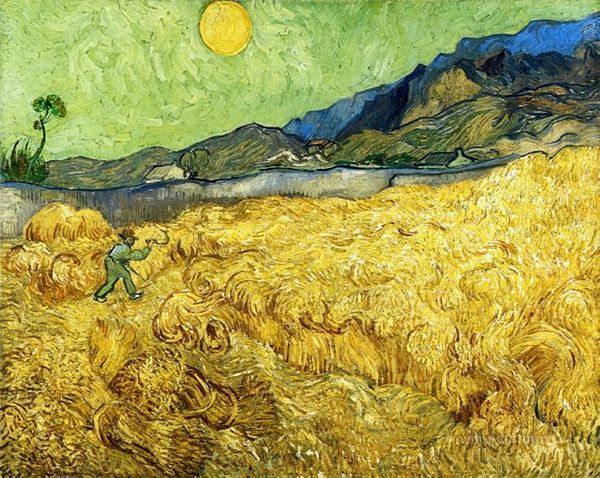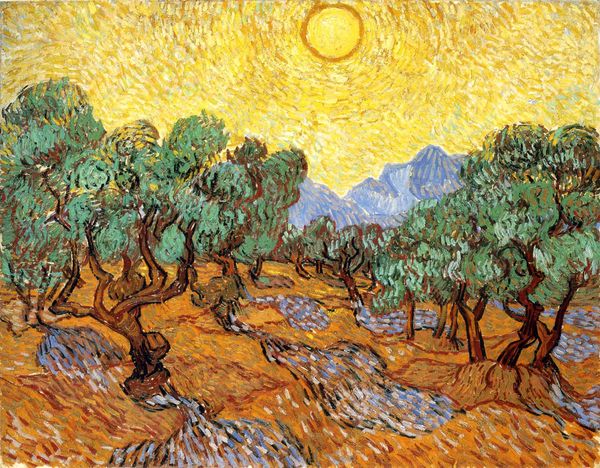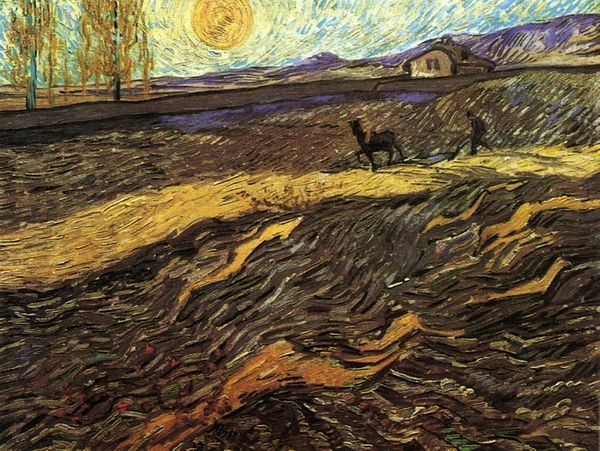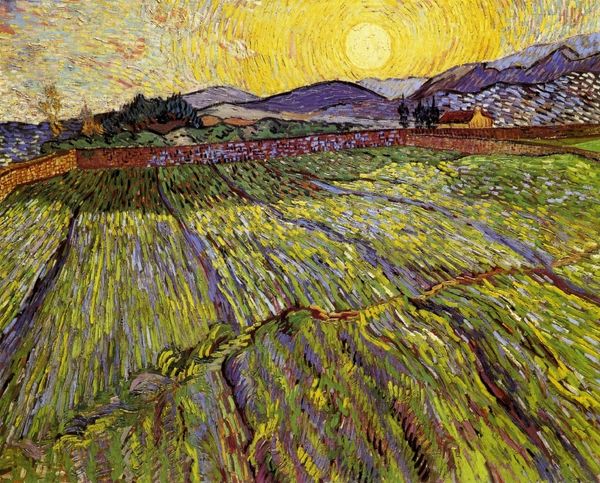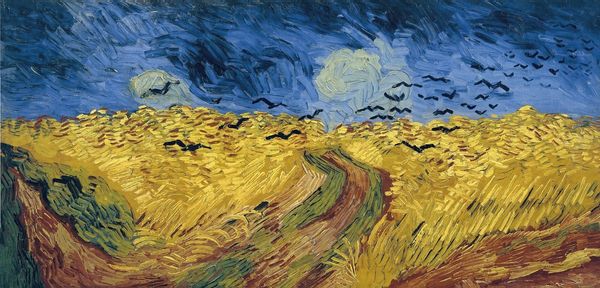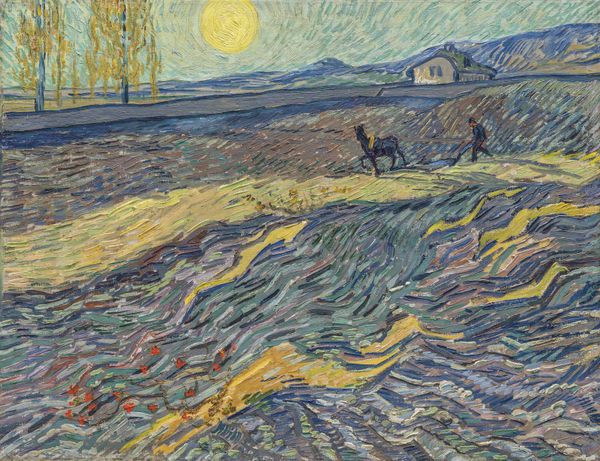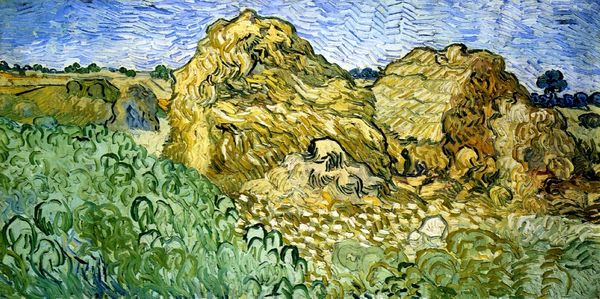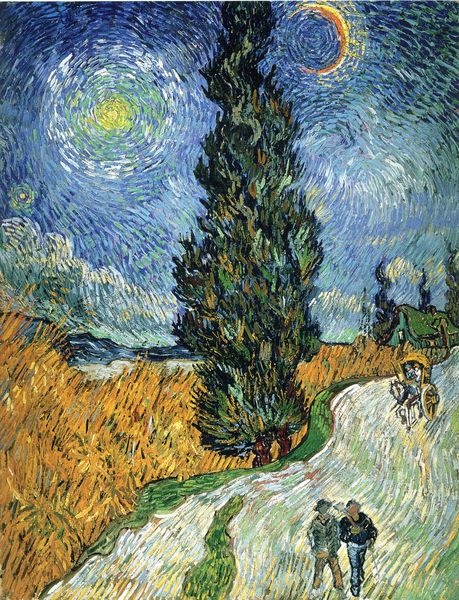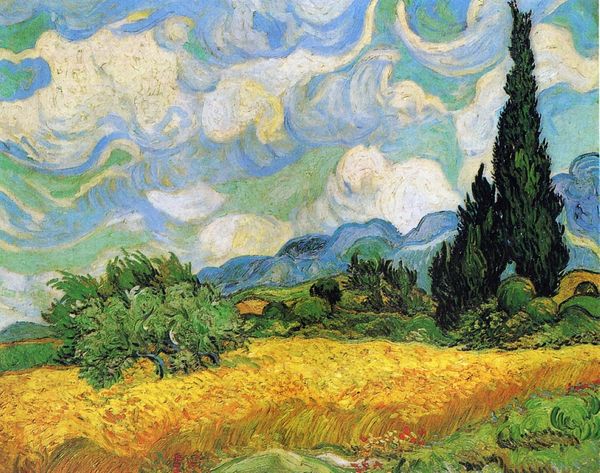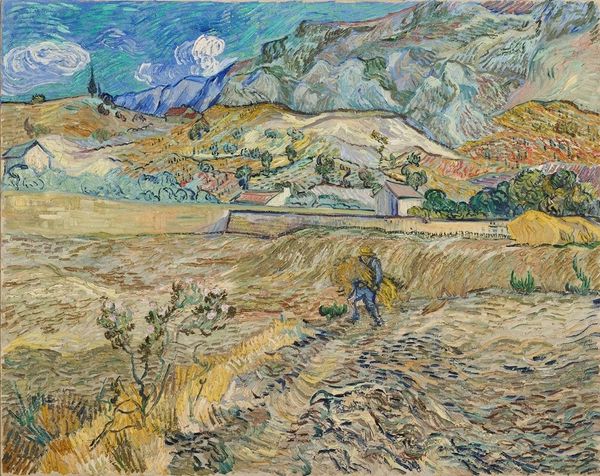
painting, plein-air, oil-paint
#
painting
#
impressionism
#
plein-air
#
oil-paint
#
landscape
#
impressionist landscape
#
figuration
#
post-impressionism
Dimensions: 59.5 x 72.5 cm
Copyright: Public domain
Vincent van Gogh painted Wheat Field behind Saint Paul Hospital with a Reaper with oil on canvas in 1889, while he was living in an asylum in Saint-Rémy. This painting is a visual manifestation of labor, of working the land in the heat, and of the cycle of life and death. Van Gogh was deeply interested in the lives of peasants and laborers. He saw them as being closely connected to the earth and to the rhythms of nature. Notice the lone figure of the reaper in the field, his body bent in the repetitive, back-breaking work of harvest. It's impossible not to consider the social implications of labor, the class divisions, and the bodies that are often made invisible in the production of food. The reaper in this painting becomes a figure through which Van Gogh explores themes of mortality, labor, and the human condition. With his characteristic brushstrokes, he imbues the scene with an emotional intensity, inviting us to reflect on the universal experiences of work, struggle, and our place in the natural world.
